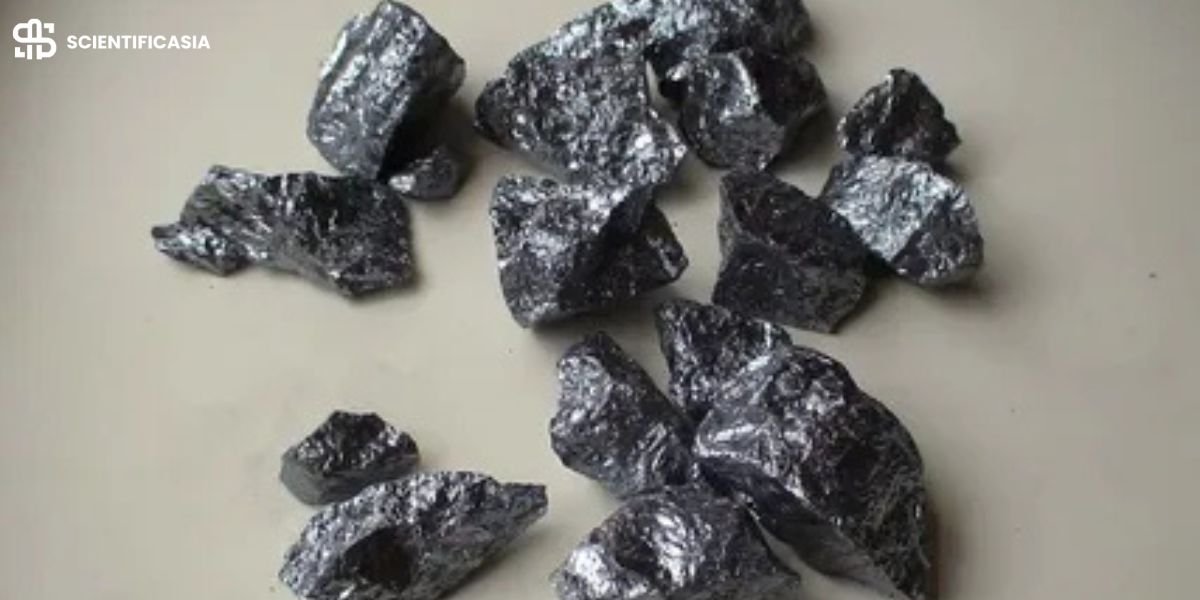Understanding the Answers for the Metalloids Test on Edgenuity is a crucial step in learning chemistry topics. This tutorial will cover everything you need to ace the metalloids test and fully comprehend the topics. We will break down the essential ideas in a way that makes learning efficient and pleasurable, whether you are preparing for a quiz, assignment, or final exam. Let’s examine metalloids, their characteristics, and how to approach the Edgenuity test with assurance.
Understanding Answers for the Metalloids Test on Edgenuity
Answers for the Metalloids Test on Edgenuity. Solutions for Metalloids Test on Edgenuity A class of chemical elements that hold a special place on the periodic table are known as semi-metals. Semi-metals are useful and necessary in many different industries because they share characteristics with both metals and nonmetals.
What Are Metalloids?
Responses to the Edgenuity Metalloids Test. “Metalloids” are elements that possess both metal and nonmetal characteristics. Frequently located at the “staircase” line that separates metals from nonmetals, they hold a special place on the periodic table. Understanding these elements is essential because they display traits from both categories, making them adaptable to chemical interactions and applications.
The most commonly recognized metalloids are:
- Boron (B)
- Silicon (Si)
- Germanium (Ge)
- Arsenic (As)
- Antimony (Sb)
- Tellurium (Te)
- Polonium (Po)
Key Properties of Metalloids
Learn about the primary characteristics of metalloids before taking the test:
Semi-conductivity: Although not as effective as metals, metalloids are known to conduct electricity. They are therefore crucial to the electronics sector, particularly in semiconductors.
Variable reactivity: Metalloids can behave like metals or nonmetals, depending on the elements they come into contact with. For instance, silicon can interact with oxygen to make metallic alloys, but it also acts like a nonmetal.
Shine: Although they can appear drab or metallic, many metalloids have a metallic shine.
Brittle: The majority of metalloids are brittle and easily break, despite having the same electrical conductivity as metals.
Amphoteric behavior: According to the chemical environment, metalloids can react as bases or acids.
Metalloids’ Significance
Answers for the Metalloids Test on Edgenuity. Metalloids are essential in many domains, but especially in technology. For example, silicon’s semiconductor qualities make it the foundation of the computing and electronics sectors. Infrared technology and fiber optics also depend heavily on germanium. The need for metalloids is growing as a result of technological advancements, making research on them more important than ever.
Metalloids’ uses
Because of their special qualities, metalloids have several uses. Here are a few instances:
Semiconductors: The two most common elements utilized in the semiconductor industry are silicon and germanium. They serve as the foundation for integrated circuits and transistors, two crucial parts of electronic devices.
Doping: Metalloids such as phosphorus and boron “dope” semiconductors change their electrical conductivity and enable the creation of a variety of electronic components.
Alloys: You can add metalloids to metals to create alloys with specific qualities. For instance, adding boron strengthens and hardens steel.
Pigments: Paints, glass, and ceramics all use metalloids like arsenic and antimony as pigments.
Pharmaceuticals: Some metalloids, such as arsenic, have uses in medicine. People once used compounds containing arsenic to treat several illnesses, including leukemia and syphilis.
How to Get Ready for Edgenuity’s Metalloids Test
The secret to doing well on any test is preparation. To ensure your readiness for the Edgenuity metalloids test, adhere to these guidelines:
Examine your study materials.
Edgenuity offers interactive tutorials and resources. Be sure to review these documents in detail. Note the highlighted information regarding the characteristics and practical uses of metalloids.
Work on a sample question.
A lot of students find that practicing example questions helps them remember the material. Make flashcards or use any practice tests that are available to learn the most common metalloid elements and their characteristics.
Recognize Trends in Periodic Tables
Make sure you comprehend the trends in the periodic table, particularly how metalloids relate to the larger range of elements. Accurately answering categorization questions requires knowledge of the properties and positions of metals and nonmetals.
View related videos.
Several instructional films available online provide a visual explanation of how metalloids work. These might be a helpful addition to your reading materials, strengthening your comprehension.
Make Use of Mnemonics
It can be hard to remember metalloid elements. To aid in your memory, consider employing mnemonic devices or connecting each component to its practical use.
Final Thoughts
Answers for the Metalloids Test on Edgenuity. We refer to interesting elements that fall somewhere between metals and nonmetals as “metalloids.” They are essential in a variety of sectors, including electronics and pharmaceuticals, due to their special qualities. We anticipate an increase in the need for metalloids and their uses as technology continues to develop.
Frequently Asked Questions about the Edgenuity Metalloids Test
This section breaks down the types of questions you might encounter on the Edgenuity metalloids test and guides how to respond to them.
What distinguishes metalloids from metals and nonmetals?
The purpose of this question is to gauge your knowledge of metalloids’ definition and distinctive characteristics. An excellent response would emphasize their intermediate characteristics, which include being brittle like nonmetals, semi-conductors, and possessing a sheen akin to metals.
Describe silicon’s function in contemporary technologies.
The usage of silicon in semiconductors, which is necessary for the creation of computer chips, solar panels, and other electronic devices, makes it crucial. You may add that it is essential to the tech sector because of its semi-conductive qualities, which enable it to effectively control the flow of energy.
Examine how metalloids react with metals and nonmetals.
Metalloids typically exhibit varied reactivity. When they react with nonmetals, they can act as metals, and vice versa. Arsenic, for example, can function as a nonmetal in other chemical reactions or combine with metals to generate compounds.
Determine the position of metalloids on the periodic table.
On the periodic table, metalloids are located along the “staircase” that separates metals from nonmetals. The placement of the six primary metalloids between metals and nonmetals indicates their hybrid characteristics.
What makes metalloids so important to the electronics sector
Another useful query you might run into is this one. Metalloids are essential components for the production of semiconductors, especially silicon and germanium. Modern electronics like computers, smartphones, and solar cells wouldn’t work as well without them.












